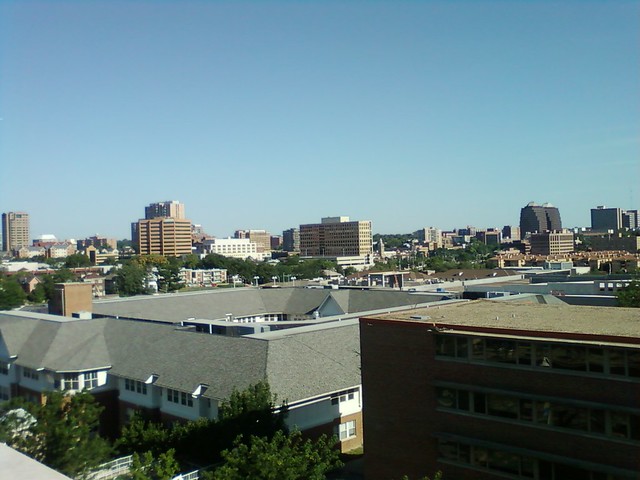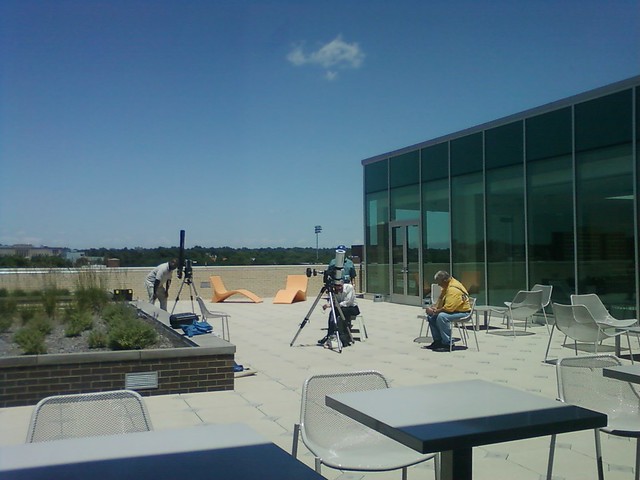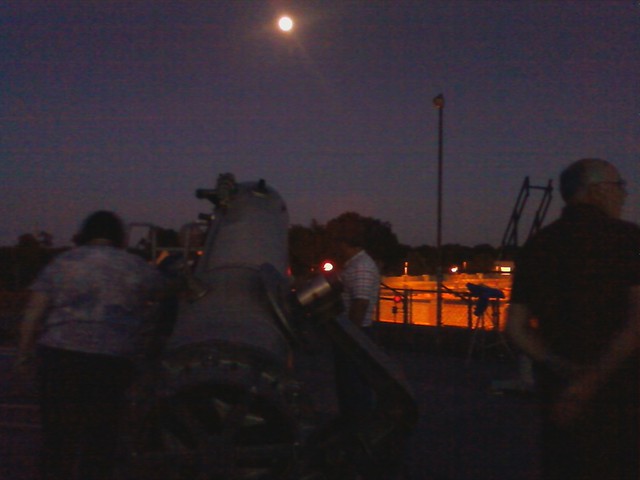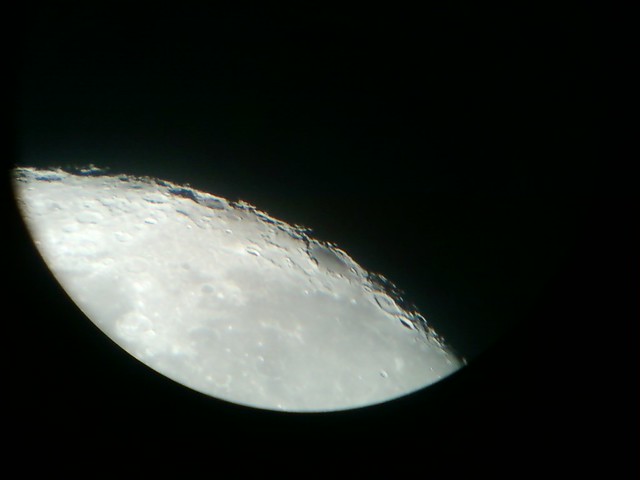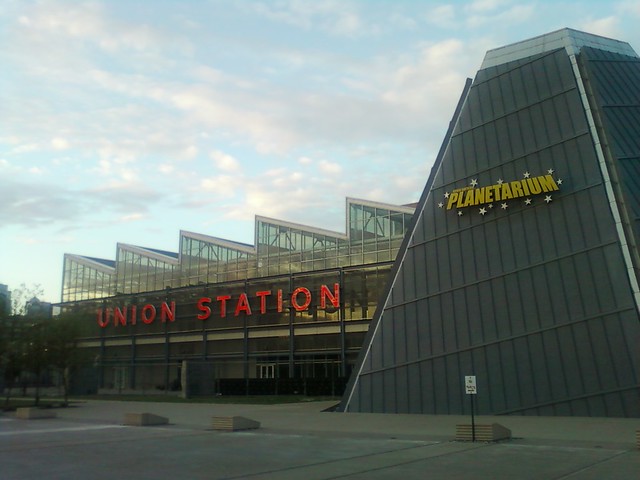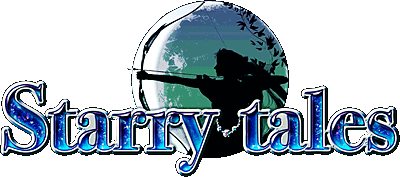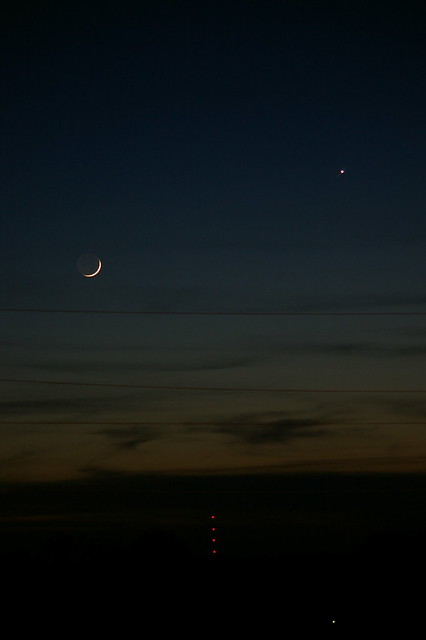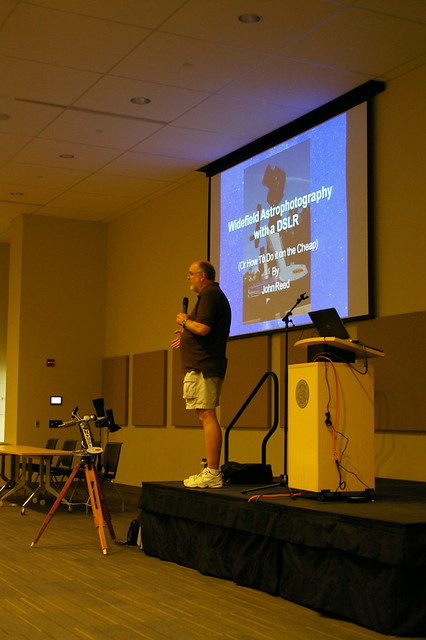
After a handulf of hours sleeping, I drug myself out of bed early Sundy morning. Rather than eating breakfast, I composed my blog post recapping Saturday at the MSRAL convention. I published at ten after eight o’clock, leaving me less than an hour to drive to UMKC from Lansing. The last day of the convention consisted of a morning dedicated to three workshops. Not knowing what I might need, I packed up my laptop and my DSLR camera and zipped down I-70, arriving with about ten minutes to spare.
I burdened myself with my laptop bag, camera backpack, purse and water bottle and trudged up the stairs to the Student Union. I opted not to take the additional four flights of stairs on the interior of the building, taking full advantage of the elevator to the top floor. I planted myself on the first row (as I’ve done each day of the convention) so I wouldn’t have any trouble hearing or seeing (or taking photographs like the one above).
First Workshop: Widefield Astrophotography with a DSLR by John Reed
Very interesting workshop on using consumer camera equipment (a Canon DSLR and a 200 mm telephoto with an AstroTrac mount) and some post-production work with Photoshop for stunning astrophotography.
Second Workshop: Variable Star Research with Modern Amateur Equipment by Jim Roe
The middle workshop presented by Jim Roe dealt with variable stars and doing some hands on scientific observation and research. I got to know his old friend Z Umi (a variable star in the Little Dipper).
Third Workshop: Successful Web Cam Astronomy by David Kolb
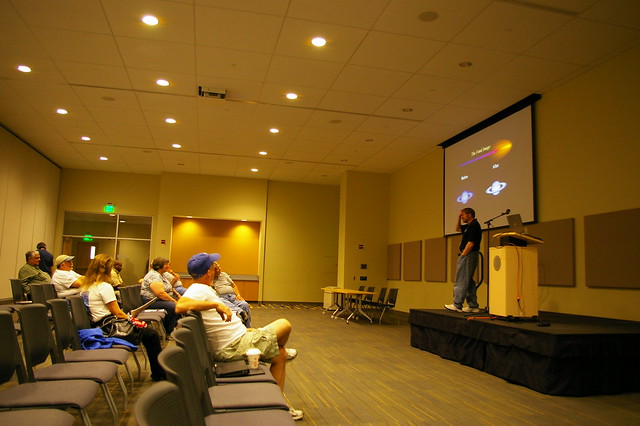
The final workshop of the day got really hands on, for those who wanted to participate in the step-by-step process of massaging web cam videos taken of Saturn to produce a nice crisp stacked image. The entire presentation will be uploaded to David’s website (Sunflower Astronomy) in the near future.
Final Musings on the Convention
I learned so much and met some great people. I have many fascinating ideas and concepts revolving through my brain and many new projects I’m inspired to pursue. I look forward to attending similar conferences when they pass through the area again.

